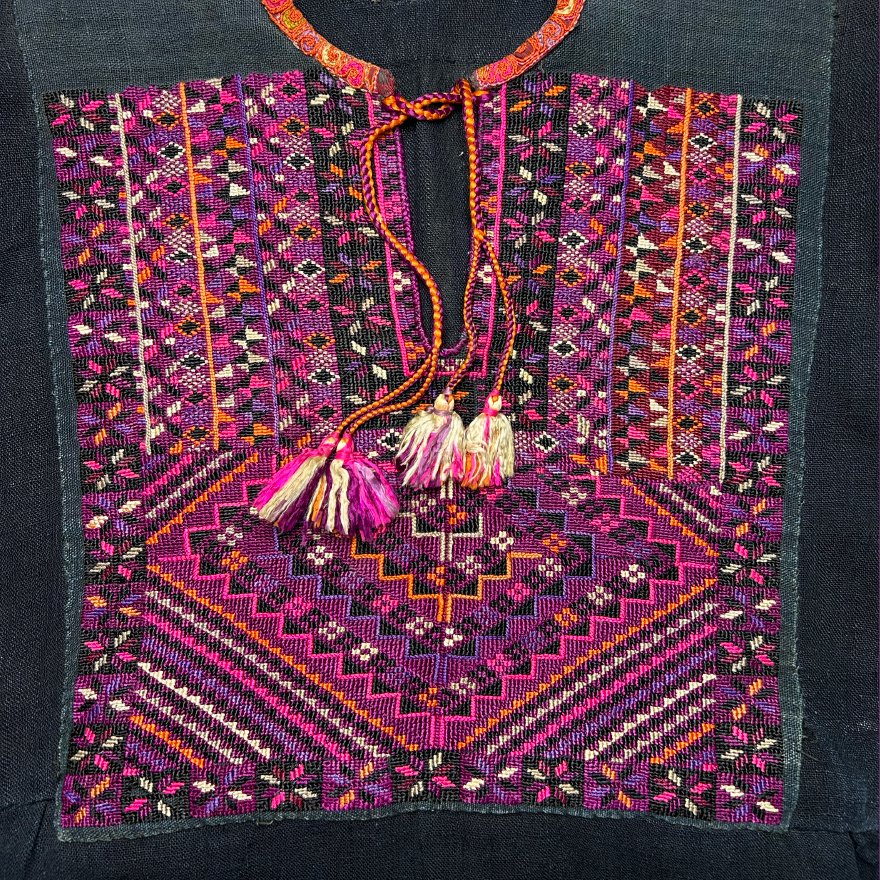




THE BETHLEHEM EVERYDAY DRESS: a tatreez pattern booklet
This tatreez pattern booklet features historic and authentic patterns taken from Bethlehem everyday dresses from the time around the 1920s in Palestine.
Here is a quick overview of the fashion style of Bethlehem, Palestine between 1900 and 1950: The attire of Beit Lahem (Bethlehem) and its surrounding villages, such as Beit Sahur and Beit Jala, Palestine, had two styles. First, the Malak dress: a very festive and stylish dress for special occasions like weddings, festivities, and church visits. The Malak was embroidered very exquisitely in tahriry, or couching stitch. The design was outlined with gold, silver, or silk cords on panels of green, orange, or red silk. Secondly, an everyday plainer dress which was worn by the women to perform their chores, work, and daily activities. These two styles of costumes were very different from each other.
This booklet is based on the everyday work dress. The everyday or “work attire” dress, or thobe al khaddama of Bethlehem, was the typical attire worn by the ladies of Bethlehem and its surrounding villages every day. It was considered much simpler than the Malak in terms of adornment and embroidery styles. However, the beauty and sophistication of the everyday dress is still very striking. Its fine silk cross-stitch embroidery with vibrant colors on dark linen is equivalent in prestige to the dresses of Ramallah and its area.
The patterns picked in this 7-page booklet were carefully studied from many dresses from the Widad Kawar and the Sadie el Tell collection. The patterns were taken from the chest panels (qabbeh), sleeves (kum), and the back panels (dyal).
The booklet provides a historic glimpse into the fashion of Bethlehem, Palestine between 1900 and 1950.
This tatreez pattern booklet features historic and authentic patterns taken from Bethlehem everyday dresses from the time around the 1920s in Palestine.
Here is a quick overview of the fashion style of Bethlehem, Palestine between 1900 and 1950: The attire of Beit Lahem (Bethlehem) and its surrounding villages, such as Beit Sahur and Beit Jala, Palestine, had two styles. First, the Malak dress: a very festive and stylish dress for special occasions like weddings, festivities, and church visits. The Malak was embroidered very exquisitely in tahriry, or couching stitch. The design was outlined with gold, silver, or silk cords on panels of green, orange, or red silk. Secondly, an everyday plainer dress which was worn by the women to perform their chores, work, and daily activities. These two styles of costumes were very different from each other.
This booklet is based on the everyday work dress. The everyday or “work attire” dress, or thobe al khaddama of Bethlehem, was the typical attire worn by the ladies of Bethlehem and its surrounding villages every day. It was considered much simpler than the Malak in terms of adornment and embroidery styles. However, the beauty and sophistication of the everyday dress is still very striking. Its fine silk cross-stitch embroidery with vibrant colors on dark linen is equivalent in prestige to the dresses of Ramallah and its area.
The patterns picked in this 7-page booklet were carefully studied from many dresses from the Widad Kawar and the Sadie el Tell collection. The patterns were taken from the chest panels (qabbeh), sleeves (kum), and the back panels (dyal).
The booklet provides a historic glimpse into the fashion of Bethlehem, Palestine between 1900 and 1950.
